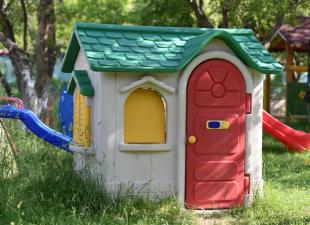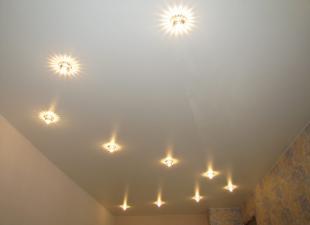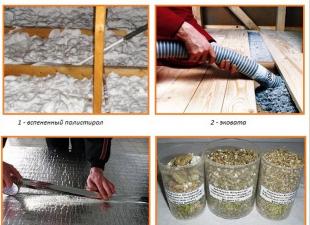Condensation on cold water pipes is quite common. Both metal and plastic pipes are most affected by moisture in the summer: to effectively overcome this problem, it is important to understand the exact cause of its origin.
Why condensation occurs
The main reasons for wetting a cold pipeline:
- If we are talking about a cold water riser, in this case, condensation will form on a constant basis, until puddles appear on the floor. The reason may lie in a leak in one or more pipes in the upper neighbor's apartment. Often the whole thing is in an unreliable toilet cistern. To find out, it is best to choose the night time, when it is possible to hear well the falling of drops along the sewer riser. Condensation usually does not occur on hot water pipes.
- When there is no exhaust ventilation. The same may be due to interruptions in her work. This problem often affects new buildings or dwellings where there are metal-plastic windows: in such cases, there may be a lack of hoods if the windows are tightly closed. To determine the difference, a simple experiment is carried out by applying a newspaper to the ventilation grill, opening and then closing the windows. If there is no exhaust ventilation, sometimes the additional fan is also powerless.
- If condensation is observed on plastic pipes that enter the apartment wiring, quite often the reason lies in the breakdown of the plumbing fixture, with insufficient or completely absent exhaust.
Condensation on the pipes in the toilet
Condensation on the cold water pipes in the toilet can occur due to high humidity or temperature fluctuations. If this problem is detected, the ventilation is checked first: for this, you can leave the door to the room open overnight. If during this time the moisture on the pipes disappears, then the whole point is in poor ventilation. Another potential cause is the constant flow of water through the tank.
This leads to the effect of cooling the pipe, since there is no time left for heating the water inside it. As a result, the pipe surface becomes a comfortable place for moisture condensation. Usually, after repairing the valves and the intake valve, the problem disappears.
Condensation in the bathroom on cold water pipes
Before starting repair activities, it is important to accurately determine the cause of the problem, which usually consists of the following:
- When the riser pipe gets wet, the whole thing is usually in the flow of the neighbors from above.
- If the pipe near the plumbing fixture gets wet, then the reason lies in the faulty tap.
- If problems with ventilation are found, work will need to be done to eliminate blockages blocking the hood.

If condensation appears on the pipes in the bathroom: what to do in such cases? When listing the methods for eliminating condensation, one cannot but recall thermal insulation, which quite effectively helps in this problem.
If this material is not available, simple polyurethane foam can replace it. To do this, a corrugation with a diameter slightly larger than the diameter of the problem pipe is taken, and cut into separate sections that are convenient for installation on communications. After putting on the corrugation, its inner space is foamed.
How to install thermal insulation on your own
Insulating cold water pipes from condensation is quite simple to do on your own.
This will require the following consumables:
- Sanding paper.
- Rust converter.
- Strong thick thread.
- Fabric strips 50-60 mm wide.
- Epoxy putty.
- Acetone.
- Spatula.

- Sand the insulated section of the pipeline to improve its adhesion performance.
- Pour some acetone onto a rag and degrease the surface.
- Use phosphoric acid to protect against corrosion.
- After the pipe is completely dry, a thick epoxy putty is applied to its surface (it is important that the material does not drip)
- Without waiting for the substance to harden, you need to quickly wind the fabric using good tension. A prepared thick thread is used to fix the last turn. During this procedure, it is very important that the turns of the fabric completely overlap each other, and the putty completely saturates them.
- After waiting for the putty to dry completely, apply a couple more layers of thermal insulation according to the same scheme. The topcoat will be an epoxy layer.
- When the finish is dry, the pipe can be sanded and painted.
Elimination of condensate on the pipeline
To eliminate this unpleasant phenomenon, one of the following methods can be used:
- Elimination of ventilation system problems. Inadequate ventilation can lead not only to condensation on pipes: it is important to remember that such conditions can provoke the formation of mold, which is very harmful to breathing, and can cause many diseases. To enhance passive ventilation, an additional forced manual fan is usually used. In addition, automation can be installed, to turn on which a timer or hygrometer is used.
- The reason may also lie in large temperature differences in the room and in the water supply system: because of this, the surfaces with which cold water is in direct contact fog up. In the future, the accumulation of moisture can develop into streams flowing down to the floor. In this case, good thermal insulation of the cold pipeline helps, which is easiest to accomplish with the help of a special tubular material (thermoflex, energy flex, foamed polyethylene). This type of insulation is available in several sizes. When selecting, you need to focus on the indicator of the inner diameter, which should be equal to the diameter of the pipeline. The tube is notched along its entire length, followed by pulling on the tube and gluing the seam. For these purposes, it is best to use a special permanent-type metallized adhesive tape.

The indoor microclimate is often directly influenced by weather conditions in the form of prolonged rains, or the specifics of the local climate. This is especially true for areas near large rivers, lakes, seas or oceans. In this case, even the highest-quality waterproofing at home will not help: it is much more efficient to use dehumidifiers or air conditioners that have a similar function. It should be said that the struggle to normalize humidity inside the home is useful not only from the point of view of combating condensation: it will also have a beneficial effect on the safety of the interior decoration and the health of the inhabitants of the house.
 parlini.ru Repair of an apartment, a summer residence and a house.
parlini.ru Repair of an apartment, a summer residence and a house.


